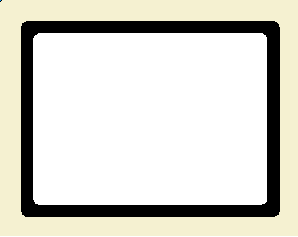

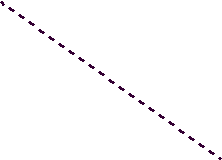
|
Screen redraw |
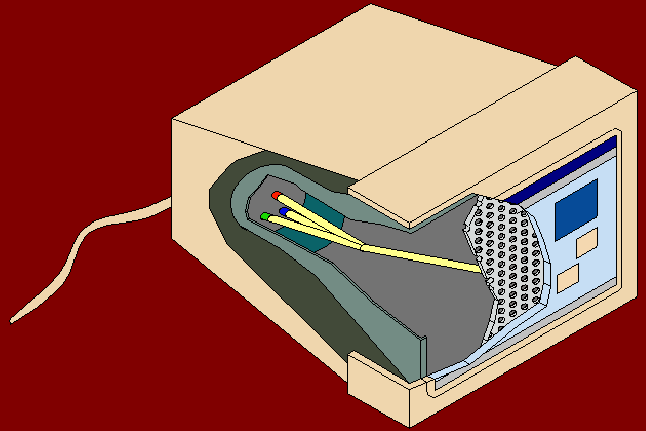
|
Monitor Exploded |




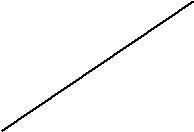


|
Video Adapters and the Computer Display. |
|
|
|
I feel that these two elements of the computer need to be explained together as they work hand in hand with each other. |
|
The image you are currently looking at on your screen is made up of millions of dots called pixels (pixel stands for picture element). Each pixel can be one of three colours red, green or blue. |
|
A collection of pixels go together to make up the most common from of computer graphic a bitmap which is a map of all the bits of data that create a computer image; like the location and the colour information for each bit. |
|
|
|
When an application wants to display an image on the screen a digital code is sent to the graphics adapter, which is usually located in the AGP port (advanced graphics port) on the motherboard. |
|
The digital code contains all the information needed for each pixel it will use to make up the image, like the intensity for the three colours red, green and blue and the location of the pixels on the screen. |
|
The graphics adapters job is to convert this digital information into an analogue signal that the monitor can understand. It does this by using a DAC chip (digital to analogue convertor) which will convert the digital code into an analogue wave form, one for each of the primary colours used, red, green and blue. |
|
|
|
The three analogue waves are sent via a monitor cable to three electron guns at the back of the monitors cathode ray tube (CRT). |
|
Each electron gun shoots out a stream of electrons, one for each of the three primary colours, with the intensity of each stream being controlled by the analogue wave sent from the graphics adapter. |
|
The electron beams pass through holes in a metal plate which is called a shadow mask. The shadow masks job is to make sure the electron beams are precisely aligned with their targeted pixel. This is important when wanting a sharp image. Sharper images require the dots to be closer together, thus requiring each dot to be precisely hit with the correct electron gun, that is why screen are rated by their dots per inch ratio. |
|
|
|
Once past the shadow mask the electron beams hits its targeted pixel, the pixel is made up of three phosphors one red, one blue and one green. An image is created when electrons, fired from the electron gun, converge to strike their respective phosphor blobs and each individual blob is illuminated, to a greater or lesser extent. When this happens, the blobs become excited and they emit light. The phosphors in a pixel are so close together |
|
that the human eye perceives the combination as a single coloured pixel. |
|
This process happens for the millions of pixels on the screen. |
|
After the beam leaves a phosphor blob it continues to glow briefly, this is called persistence, because the phosphor only glows briefly it must be �re-energised� by the electron gun, this is known as refreshing. |
|
|
|
The electron gun must continually sweep the entire area of the screen, updating and refreshing the pixels. The way it does this is that the electron gun starts at the top left hand corner of the screen and then makes one horizontal sweep of the screen, the electron gun is then turned off and and the beams are refocused back to the left hand side but just below the previous scan line, this continues all the way down the screen until it reaches the bottom right hand corner, it is at this stage that the electron beam returns to the top left hand corner and repeats the whole process again. The screen is normally redrawn about 70 times a second, if is was much less than this the eye would perceive the screen as flickering as it was redrawn. |
|
|
|
|
|
|
|
|
|
|
|
|
|
|
|
|
|
|
|
|
|
|
|
|
|
|
|
|
|
|
|
|
|
|
|
|
|
|
|
|

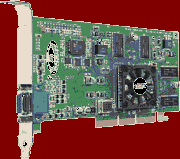
|
Typical graphics adapter |



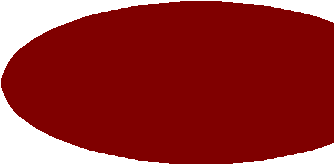
|
Navigation Menu |
|
Video Adapters and the Computer Display. |
|
|
|
I feel that these two elements of the computer need to be explained together as they work hand in hand with each other. |
|
The image you are currently looking at on your screen is made up of millions of dots called pixels (pixel stands for picture element). Each pixel can be one of three colours red, green or blue. |
|
A collection of pixels go together to make up the most common from of computer graphic a bitmap which is a map of all the bits of data that create a computer image; like the location and the colour information for each bit. |
|
|
|
When an application wants to display an image on the screen a digital code is sent to the graphics adapter, which is usually located in the AGP port (advanced graphics port) on the motherboard. |
|
The digital code contains all the information needed for each pixel it will use to make up the image, like the intensity for the three colours red, green and blue and the location of the pixels on the screen. |
|
The graphics adapters job is to convert this digital information into an analogue signal that the monitor can understand. It does this by using a DAC chip (digital to analogue convertor) which will convert the digital code into an analogue wave form, one for each of the primary colours used, red, green and blue. |
|
|
|
The three analogue waves are sent via a monitor cable to three electron guns at the back of the monitors cathode ray tube (CRT). |
|
Each electron gun shoots out a stream of electrons, one for each of the three primary colours, with the intensity of each stream being controlled by the analogue wave sent from the graphics adapter. |
|
The electron beams pass through holes in a metal plate which is called a shadow mask. The shadow masks job is to make sure the electron beams are precisely aligned with their targeted pixel. This is important when wanting a sharp image. Sharper images require the dots to be closer together, thus requiring each dot to be precisely hit with the correct electron gun, that is why screen are rated by their dots per inch ratio. |
|
|
|
Once past the shadow mask the electron beams hits its targeted pixel, the pixel is made up of three phosphors one red, one blue and one green. An image is created when electrons, fired from the electron gun, converge to strike their respective phosphor blobs and each individual blob is illuminated, to a greater or lesser extent. When this happens, the blobs become excited and they emit light. The phosphors in a pixel are so close together |
|
that the human eye perceives the combination as a single coloured pixel. |
|
This process happens for the millions of pixels on the screen. |
|
After the beam leaves a phosphor blob it continues to glow briefly, this is called persistence, because the phosphor only glows briefly it must be �re-energised� by the electron gun, this is known as refreshing. |
|
|
|
The electron gun must continually sweep the entire area of the screen, updating and refreshing the pixels. The way it does this is that the electron gun starts at the top left hand corner of the screen and then makes one horizontal sweep of the screen, the electron gun is then turned off and and the beams are refocused back to the left hand side but just below the previous scan line, this continues all the way down the screen until it reaches the bottom right hand corner, it is at this stage that the electron beam returns to the top left hand corner and repeats the whole process again. The screen is normally redrawn about 70 times a second, if is was much less than this the eye would perceive the screen as flickering as it was redrawn. |
|
|
|
|
|
|
|
|
|
|
|
|
|
|
|
|
|
|
|
|
|
|
|
|
|
|
|
|
|
|
|
|
|
|
|
|
|
This is an exploded view of a monitor. |
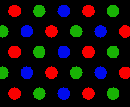
|
Phosphor dots |


|
Use this to search |
|
Beginpc.com for |
|
what you want |

|
� 2000 Shaun White beginpc.com |